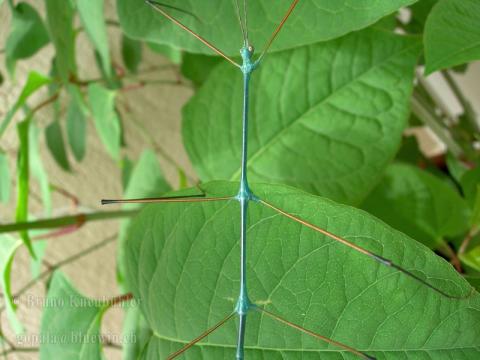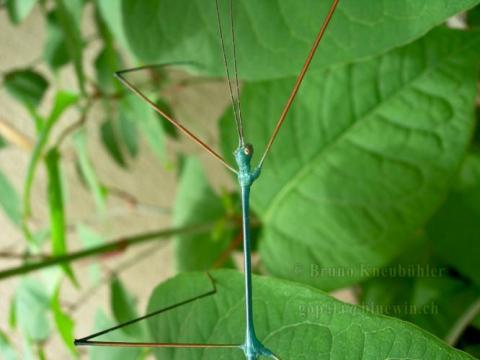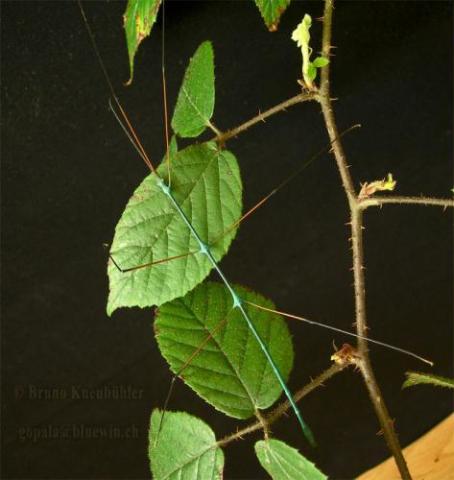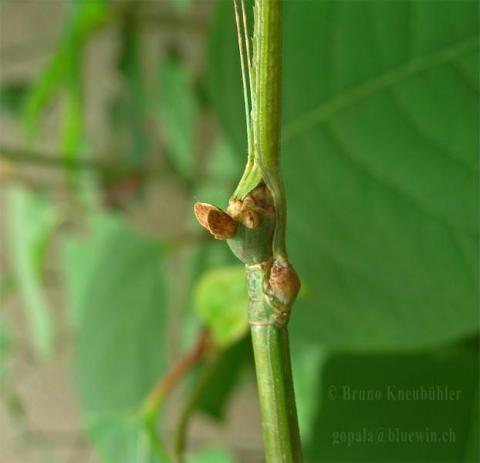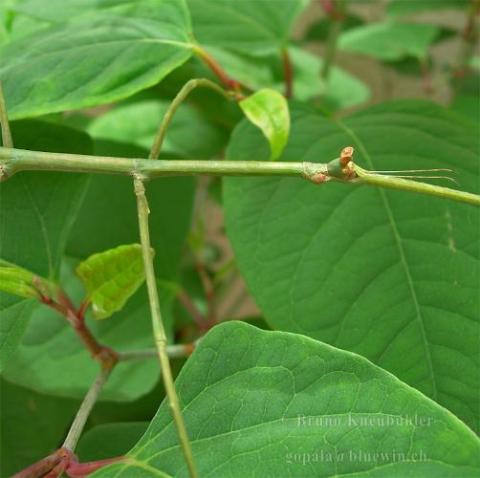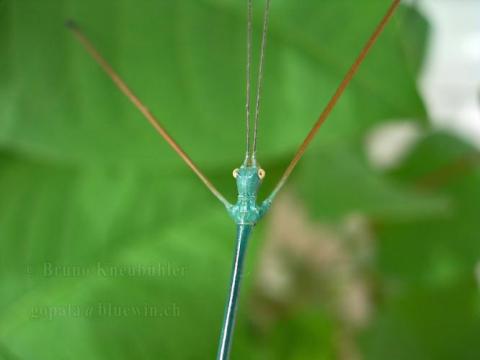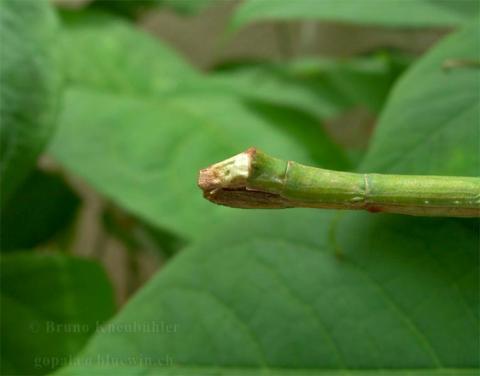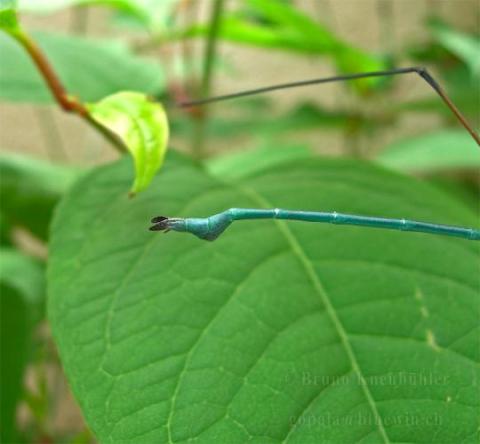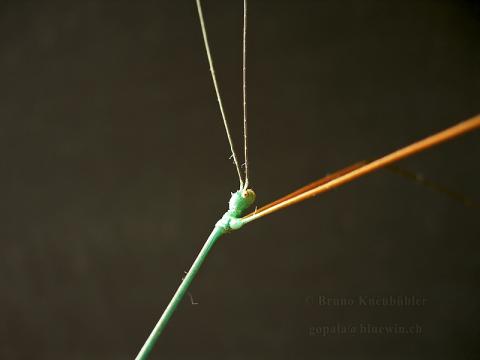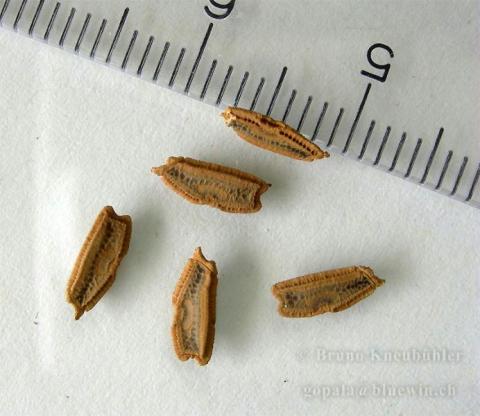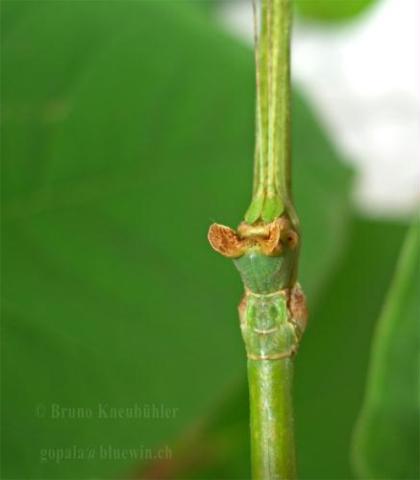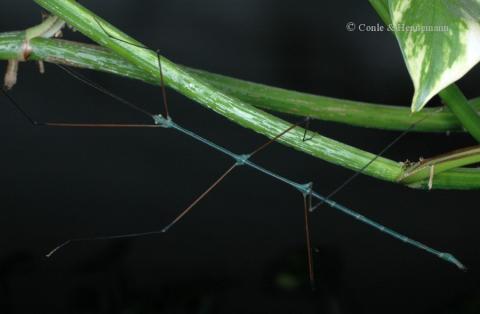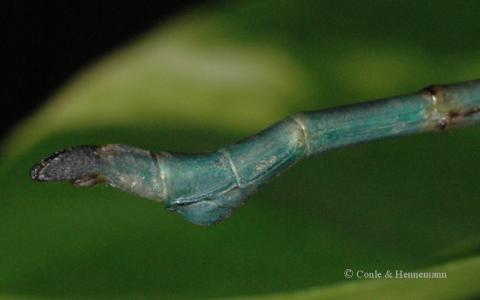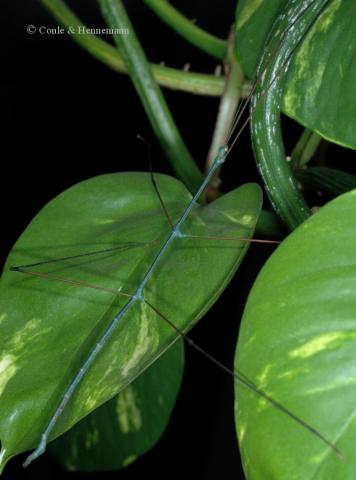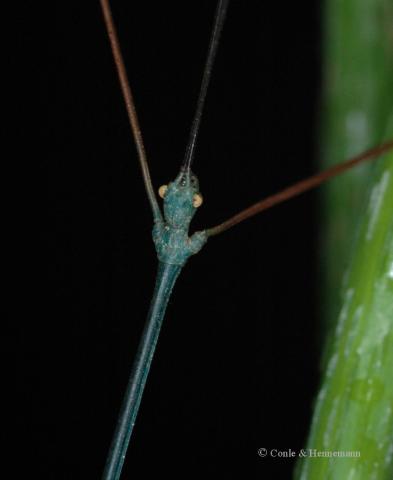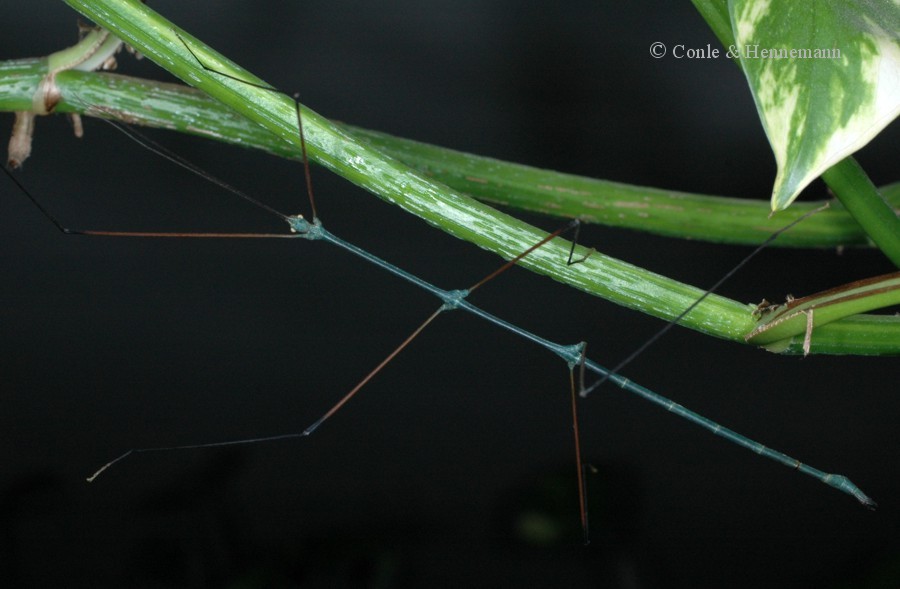
Genus
Species
Stock
CLP
6
PSG
55a
Culture status
In culture
Foodplants
Bramble (Rubus spp.)
Raspberry (Rubus idaeus)
Rose (Rosa spp.)
Oak (Quercus robur)
Breeding notes
(by Bruno Kneubuehler)
General Notes
- Haan described this species as Phasma (Bacteria) nematodes in 1842
- 2005 - first successful culture of this species by Harald Lamprecht (Switzerland)
- 2008 - distributed as Ramulus nematodes "blue" to other breeders
- thanks a lot to the following breeders for their contribution: Harald Lamprecht
_________________
Origin
- Khao Lak (Thailand) – beside a street towards Pucket
_________________
Females
- typical, wingless stick insects. They can grow quite big (14 – 16,5 cm), thus they are bigger than the R. nematodes variation with red males
- on their head are two big, brown lobe-like expansions
- short feelers, only 1 – 1,5 cm long
- colour is ranges from brown to green
_________________
Males
- typical, wingless stick insects. They are very thin, especially the legs, and grow to about 10 cm. Thus they are also bigger than the R. nematodeswith red males
- beautifully coloured when adult. The body is blue, while the legs are brown
- short feelers – about 3 cm long
_________________
Eggs
- very flat eggs, brown in colour - about 6 x 2 mm
- incubate them at room temperatures (18°C to 25°C) on a damp substrate - e.g. sand. Incubation time is around 4 months
_________________
Food Plants
- nymphs as well as adults will feed easily on bramble. In summer you can offer them also other Rosaceae (raspberry, rose) - and they like oak
_________________
Breeding Notes
- an easy to breed species – still they need some basic care
- phasmid breeders should be careful enough, as not to mix up R. nematodes cultures which originate from different locations !
- keep the nymphs in smaller cages and transfer them to bigger cages – appropriate to their size – as the grow bigger
- this is a fragile species, therefore one should take care that there are not too many specimens in the same cage
- I do never spray nither nymphs nor adults, but I keep them in a fairly humid cage with wet paper towel on the bottom. That is enough to keep the humidity high enough, also for them to moult successfully
